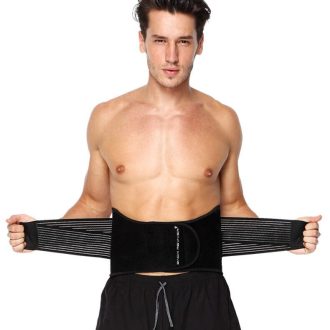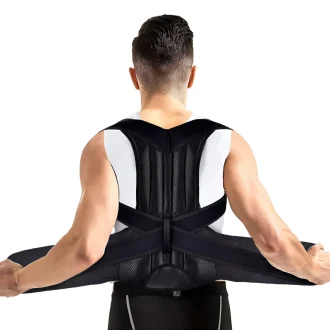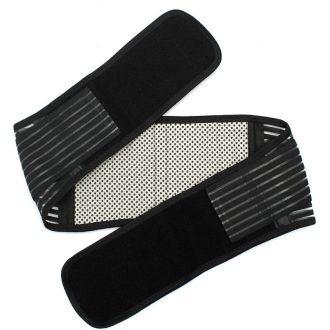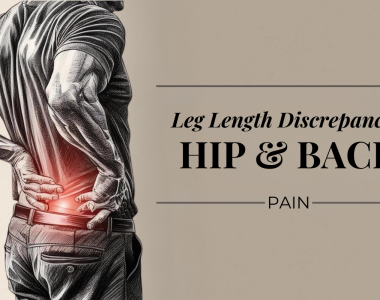No products in the cart.
What could be causing this persistent ache in my lower back?
Today, we’re diving into a common issue that many of you might face: persistent lower back pain that just doesn’t seem to go away. If you’ve found yourself dealing with a nagging ache that affects your daily routine, you’re not alone. Our upcoming discussion will explore potential causes, including factors such as prolonged sitting, posture, and even stress. We’ll also share some practical advice to help you find relief and improve your overall well-being. Let’s get started on understanding this discomfort and discovering effective solutions together.
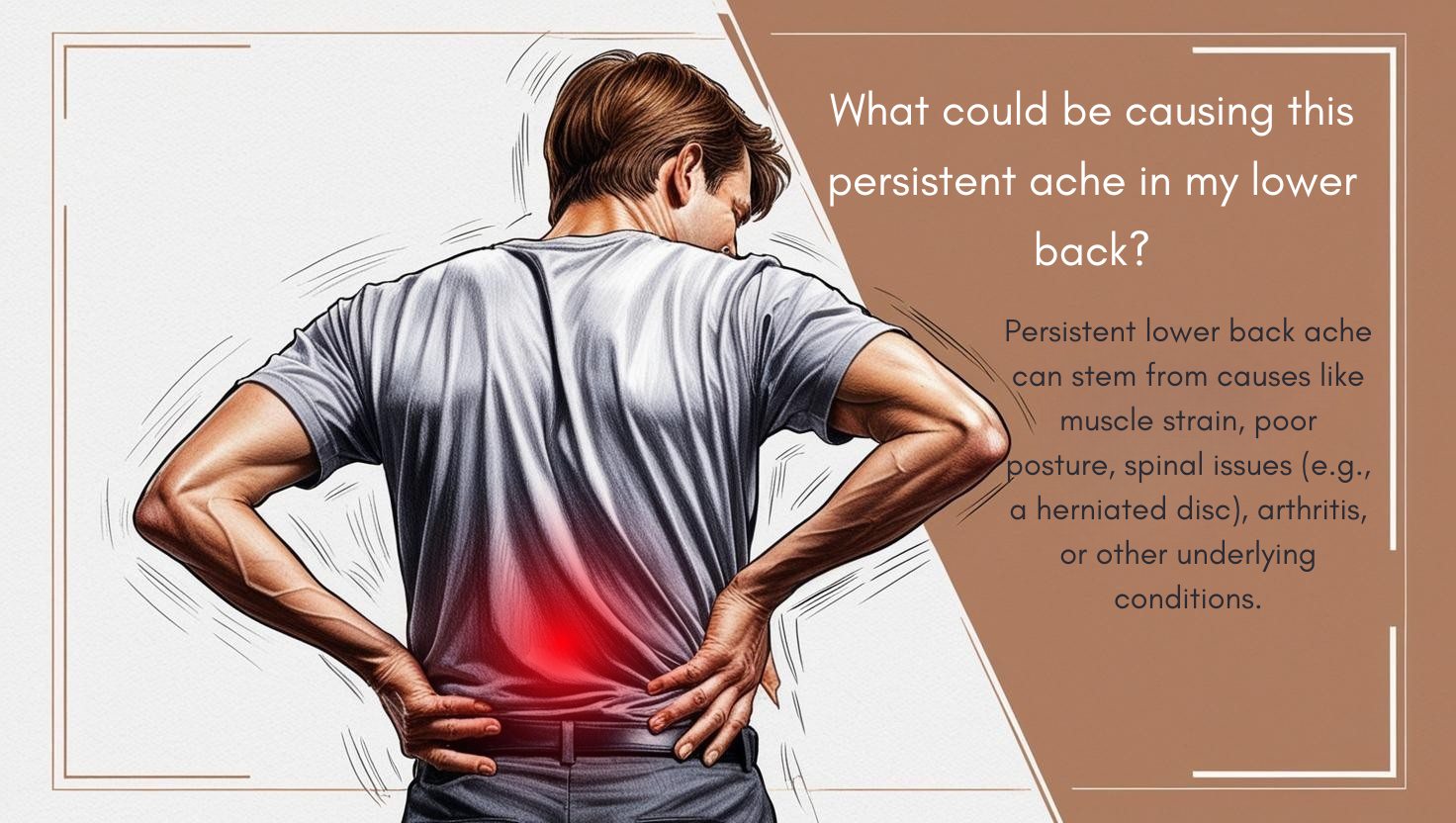
Recently, one of our customers reached out to us with the following concern:
Hey there! I’ve been dealing with this nagging lower back ache for a while now, and it’s starting to really get on my nerves. It’s not super intense, but it’s persistent enough that it’s affecting my day-to-day activities. I can’t think of anything specific that might have triggered it, like lifting something heavy or an obvious injury. I do spend a lot of time sitting at my desk for work, and I’m wondering if that could be a factor. I’ve tried some basic stretches and over-the-counter pain relievers, but they don’t seem to help much. I’m curious about what else might be causing this discomfort. Could it be something about my posture, or maybe stress-related? I’m not sure if I should just wait it out or if there’s something more going on. What could be causing this persistent ache, and what would you recommend I do to find some relief? Thanks for your insight!
Understanding Your Persistent Lower Back Ache
Lower back pain is a common complaint that affects many people at some point in their lives. It can become a real nuisance, especially when it starts interfering with day-to-day activities. Let’s explore some potential causes and strategies to help you find relief.
Things to Consider:
- Prolonged Sitting and Poor Posture: When you sit for extended periods with inadequate posture, you increase pressure on your lumbar discs and alter the spine’s natural curve, potentially leading to lower back pain. Pay attention to your sitting habits and make adjustments to maintain a healthy posture.
- Improper Lifting Techniques: Be mindful of how you lift heavy objects. Use proper techniques, such as bending at the knees and avoiding twisting your torso, to prevent straining your lower back and reduce the risk of sudden injuries.
- Stress-Induced Tension: Stress can cause your back muscles to tense up, leading to discomfort and persistent pain. Practice stress management techniques to prevent your muscles from contracting and tightening excessively.
- Lack of Movement: Inactivity can cause the muscles supporting your spine to become stiff and weak, leading to immediate stiffness and discomfort. Incorporate regular movement into your routine to keep these muscles flexible and strong.
- Poor Ergonomics: Ensure your workstation is ergonomically arranged to prevent lower back pain. Avoid awkward positions that apply excessive pressure on your back by adjusting your chair, desk, and computer setup.
By recognizing these factors, you can take prompt action to make adjustments that may alleviate your back pain.
More Serious Underlying Causes:
While it’s important to address the immediate factors, it’s equally crucial to recognize any more serious underlying conditions that might be contributing to your discomfort.
Cancer: An Important, Though Rare, Consideration for Persistent Lower Back Discomfort: Although cancer is a rare cause of persistent lower back pain, it is a serious condition that should be considered and ruled out by a doctor. Various types, such as spinal tumors, metastatic cancer (cancer that has spread from another part of the body), or multiple myeloma, can affect the spine and surrounding areas. This kind of pain is often persistent, severe, and not relieved by rest. You might also notice additional symptoms like unexplained weight loss, fatigue, or neurological changes. It’s crucial to seek medical evaluation for ongoing back pain to rule out or diagnose cancer, as early detection is vital for effective treatment and can be life-saving.
Muscle Strains and Sprains: These are among the most common causes of lower back pain. A sudden movement or heavy lifting can overstretch or tear muscles and ligaments in your back. Muscle strains typically affect the lumbar region, leading to acute pain. Nearly 80% of people will experience a back problem at some point in their lives. If you’re an athlete, manual laborer, or have a physically demanding job, you’re at higher risk. Symptoms include stiffness, spasms, and difficulty moving. While often not serious, it’s important not to ignore them, as they can lead to more chronic issues if unresolved.
Herniated Discs: A herniated disc occurs when the soft center of a spinal disc pushes through a crack in the tougher exterior casing. This condition is relatively common, especially if you’re over 30, and can lead to pressure on spinal nerves. The lumbar region is most frequently affected, causing pain, numbness, or weakness in the lower back and legs. If you sit for long periods, are overweight, or engage in heavy lifting, you’re more at risk. Recognizing signs like tingling or muscle weakness is crucial, as untreated herniated discs can lead to long-term nerve damage.
Sciatica: This condition occurs when your sciatic nerve, which runs from your lower back down each leg, becomes compressed or irritated. Often caused by a herniated disc or bone spur, sciatica is estimated to affect around 40% of people at some point in their lives. You may experience pain radiating from your lower back through the buttock and down your leg, typically affecting only one side of your body. You might also notice numbness, tingling, or muscle weakness. It’s important to seek medical advice, as untreated sciatica can lead to prolonged pain and mobility issues.
Spinal Stenosis: This condition involves the narrowing of your spinal canal, which can put pressure on your nerves and spinal cord. It’s most common if you’re over 50. Spinal stenosis in the lumbar region can cause back pain, cramping, or weakness in your legs. According to the American Academy of Orthopaedic Surgeons, it affects around 250,000 to 500,000 people in the United States. Early diagnosis is crucial to prevent lasting nerve damage.
Fractures: Spinal fractures can result from trauma like falls or accidents and are more common if you have osteoporosis, a condition that weakens bones. These fractures usually occur in the vertebrae of your lower back and can lead to severe, debilitating pain. The National Osteoporosis Foundation notes that approximately 1.5 million osteoporosis-related fractures happen annually. If you experience sudden onset back pain and reduced mobility, immediate medical attention is necessary to avoid further complications.
Sacroiliac Joint Dysfunction: This joint connects your spine to your pelvis and helps absorb the impact of walking and lifting. Dysfunction occurs when the joint becomes inflamed or moves abnormally, leading to pain in your lower back and buttocks. It’s often mistaken for other types of back pain, like that from a herniated disc. Pregnant women and those with previous lower back injuries are at greater risk. The pain can be sharp and may worsen with prolonged sitting or standing.
Steps to Relief
Now that you have a better understanding of the potential causes of lower back pain, let’s explore some effective steps to finding relief. These strategies aim to alleviate discomfort and promote overall back health, guiding you towards a more comfortable and active lifestyle.
Check Your Workspace: Ensure your chair supports the natural curve of your spine. Your feet should rest flat on the floor, and your screen should be at eye level to avoid neck strain. Small adjustments can make a big difference.
Movement Breaks: Set a timer to remind yourself to stand, stretch, and walk around at least once an hour. Even a few minutes can make a difference. Simple stretches targeting the spine and hip flexors can alleviate tension.
Reduce Your Stress Levels: Consider incorporating stress-reduction techniques like mindfulness meditation or deep-breathing exercises into your routine. These can help reduce overall tension in your body.
Physical Activity: Regular exercise, focusing on strengthening your core and improving your flexibility, can provide long-term relief. Activities like yoga or Pilates can be particularly beneficial for back health.
Improve Your Sleeping Position: Ensure your mattress and pillows support your spine’s natural alignment. Sleeping on your side with a pillow between your knees can help maintain this alignment and reduce strain on your lower back.
Stay Hydrated: Proper hydration is essential for maintaining the elasticity of soft tissues and the fluidity of joints. Drinking enough water can help reduce stiffness and support overall spinal health.
Apply Heat or Cold Therapy: Use a heating pad or warm towel to relax tight muscles and increase blood flow, or apply a cold pack to reduce inflammation and numb sharp pain. Alternating between heat and cold can also be effective.
Professional Guidance: If the pain persists, it might be worth consulting a healthcare professional. A physiotherapist can offer personalized advice and exercises tailored to your needs. They can also identify any underlying issues that might not be apparent.
The Benefits of Wearing a Lower Back Support
Wearing a lower back support can be a game-changer for those experiencing lower back pain. These supports work by providing stability to the lumbar region, reducing strain on your muscles and spine. By maintaining proper alignment, a back support can help alleviate pain and prevent further injury, allowing you to go about your daily activities with reduced discomfort. Additionally, these supports can promote healing by offloading pressure from the affected area, making them an invaluable tool for those in recovery or dealing with chronic pain.
Why Choose a Lower Back Support from NuovaHealth?
Choosing the right lower back support is crucial for effective pain management, and NuovaHealth offers a range of options designed to meet diverse needs. Here’s why you should consider our products:
- High-Quality Range: Our collection includes NuovaHealth’s own line of high-quality lower back supports, known for their durability and effectiveness. Each product is crafted from premium materials that ensure comfort and longevity.
- Expertly Designed and Tested: All our back supports have been expertly designed and rigorously tested to ensure they meet the highest standards of efficacy. We collaborate with healthcare professionals to develop products that are often recommended by doctors and physiotherapists.
- Trusted Brands: In addition to our own products, we offer premium supports from renowned brands such as Backreviver, ensuring a wide range of options for our customers.
- Professional Recommendations: Healthcare professionals frequently recommend our supports to their patients, underscoring their trust in our products’ ability to provide relief and support for lower back pain.
- 30-Day Money Back Guarantee: We stand by our products with a 30-day money-back guarantee. If you’re not completely satisfied, you can return your purchase within 30 days for a full refund. This guarantee allows you to try our products risk-free and ensures your satisfaction.
Explore Our Range
We invite you to discover our comprehensive selection of lower back supports. Whether you’re seeking relief from chronic pain or looking to prevent future issues, NuovaHealth has the right solution for you. Our expertly curated range is just a click away, offering trusted quality and reliability.
Take the first step towards alleviating your lower back pain by exploring our range of supports at NuovaHealth today. Your journey to comfort and relief starts here.
-
 Back brace for lower back pain with double strap£21.99inc VAT
Back brace for lower back pain with double strap£21.99inc VAT -
 Back Support Belt for Lower back pain£16.99inc VAT
Back Support Belt for Lower back pain£16.99inc VAT -
 Back Support Brace for Poor Posture, Hunchback, Spine Misalignment & Rounded ShouldersPrice range: £12.49 through £15.99inc VAT
Back Support Brace for Poor Posture, Hunchback, Spine Misalignment & Rounded ShouldersPrice range: £12.49 through £15.99inc VAT -
 Hip brace£16.99inc VAT
Hip brace£16.99inc VAT -
Product on sale
 Lower Back Lumbar Support Belt for Pain Relief and Posture Correction£12.49
Lower Back Lumbar Support Belt for Pain Relief and Posture Correction£12.49£14.99inc VAT -
 Si Joint Belt£11.99inc VAT
Si Joint Belt£11.99inc VAT
When to Seek Further Help
If your pain persists despite these efforts, it may be time to seek medical advice. According to a study by the UK National Institute for Health and Care Excellence (NICE), persistent pain lasting more than six weeks might need professional evaluation to rule out underlying conditions.
Remember, while self-care measures can be effective, they aren’t a substitute for professional diagnosis and treatment if the problem persists. Don’t hesitate to reach out to a healthcare provider if you feel it’s necessary.
In conclusion, listen to your body and pay attention to the signals it sends you. By making a few adjustments and seeking appropriate guidance, you can alleviate that persistent ache and get back to enjoying your day-to-day activities. Stay proactive, and you’ll likely find the relief you’re seeking!

